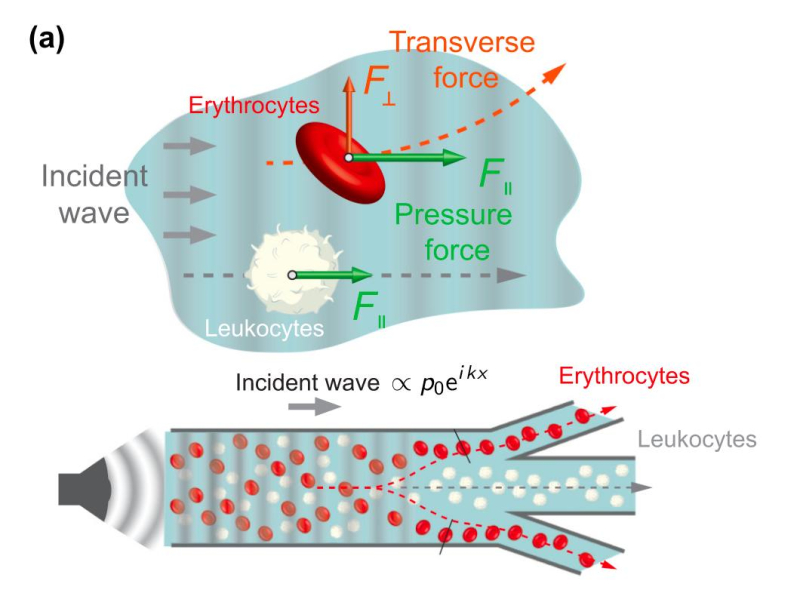Scientists at ITMO University have found a new lateral recoil force that affects non-spherical particles in an acoustic field. The new force will make it easier to extract cells of a certain shape from blood or other liquids – such as elongated platelets or spherical leukocytes – which will be useful for developing new, more accurate, and affordable methods for diagnosing various diseases. The findings were reported in Physical Review Applied and highlighted in Physics Magazine.

Mihail Petrov. Photo by Dmitry Grigoryev / ITMO.NEWS
Acoustic tweezers are used to manipulate objects in a variety of ways, such as capturing and sorting cells for diagnostics, running lab-on-a-chip DNA analysis, or controlling liquid flows in solution preparation. They are typically employed for small spherical particles as they are simpler to grab and hold.
Researchers at ITMO have discovered a new type of acoustic force, i.e. lateral recoil force, which explains how acoustic waves affect non-spherical objects of complex shapes. The new force acts when a particle is tilted at a specific angle relative to the acoustic waves and the torque that rotates it. As the torque reaches zero, the asymmetrical object stops rotating and rises steadily in the acoustic field.
“Lateral recoil force is like sailing; the wind hits the boat from the side, causing it to move at a certain angle to the wind’s direction as it inflates the sails. In the effect we discovered, the particle is pushed upward by an acoustic wave from a speaker rather than the wind. At the same time, the force makes it not only rise but also twist. For more stable particle movement, we calculated under which conditions the particle in question has no torque and rises at a constant angle. As the force acts on asymmetrical objects, we suggest using it for sorting complex, asymmetrically-shaped objects,” explains Mihail Petrov, a senior researcher at ITMO’s Faculty of Physics.

Schematics of the possible application of acoustic lift for acoustofluidic separation of the white and red blood cells using their shape anisotropy. Illustration by the researchers
As the new technology allows for more efficient extraction of cells with a certain form (e.g., elongated platelets or spherical leukocytes) from blood or other fluids, it will increase diagnostic accuracy and aid in the detection of specific biological marker cells in fluids. Furthermore, it will also help reduce the cost of disease diagnostics; unlike existing methods, it does not require adjustments of current equipment and can be put into a ready-made device, such as a microfluidic chip.
“At the moment, researchers use custom microfluidic nanostructures to sort biological objects and particles; these are networks of channels that are built similarly to a vacuum cleaner’s filter. Particles of varied shapes flow through those channels, and if oversized, they get trapped inside – and that’s how they are filtered. A second force can be introduced for greater efficacy. For instance, an acoustic field can be used to separate particles based not only on their shape but also materials. We also suggest paying attention to the geometrical shape of biological objects, as our technique can isolate elongated erythrocytes from spherical leukocytes. At around 230 MHz, an acoustic wave generates a lateral recoil force that affects erythrocytes due to their elongated shapes, while spherical leukocytes experience solely the longitudinal pressure force. As a result, erythrocytes drift higher, and leukocytes continue to circulate through the liquid. We’re planning to go on with our research and run a series of experiments to test our hypotheses,” notes Mikhail Smagin, an engineer at ITMO’s Faculty of Physics.
The research project is supported by the federal program Priority 2030.
Alena Mamaeva
Journalist
Marina Belyaeva
Translator
